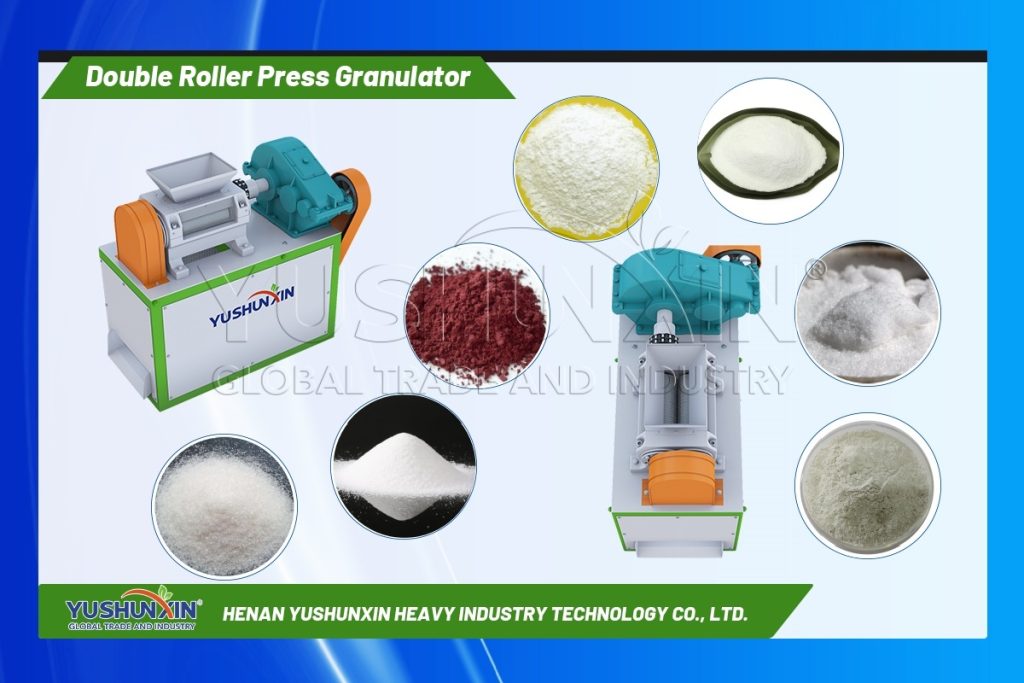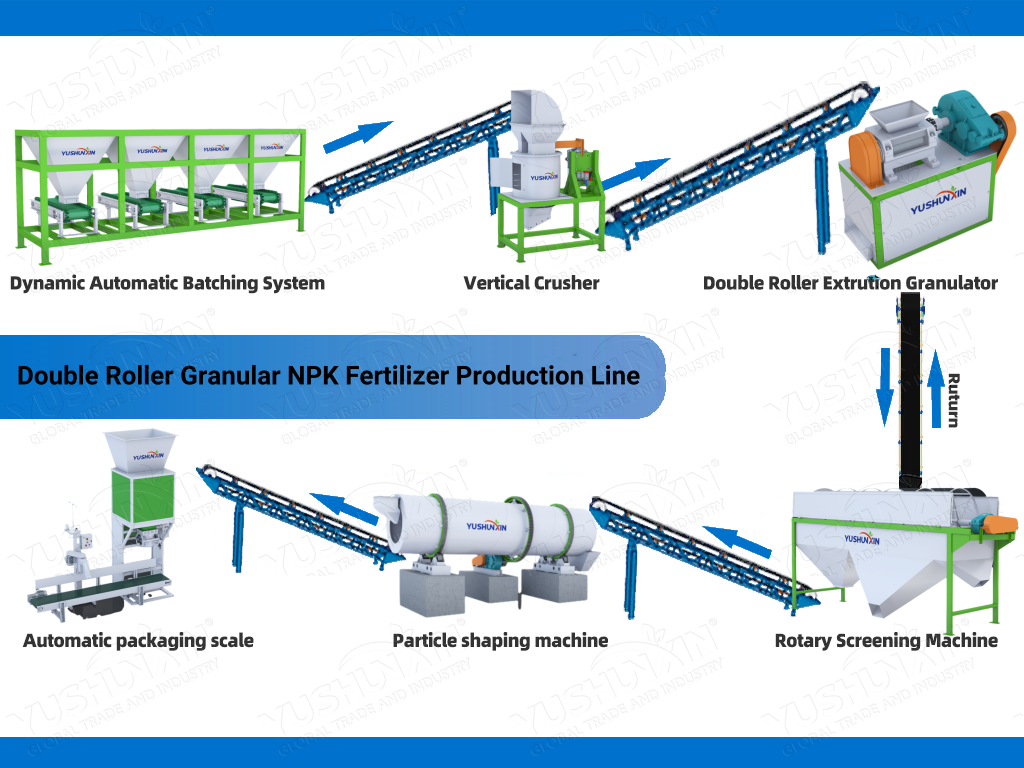Double roller granulation serves as an efficient method for producing NPK (Nitrogen, Phosphorus, and Potassium) fertilizers. Understanding the best raw materials for this granulation process is essential for companies aiming to enhance their fertilizer production capabilities. This blog will explore suitable materials, the specific needs of various industries, and the features of double roller granulation equipment.
What Raw Materials are Ideal for NPK Fertilizer Production?
Several raw materials work effectively for producing 30 t/h NPK fertilizers using double roller granulation. Common examples include ammonium sulfate, urea, and potassium chloride, among others. Each of these materials offers unique benefits for manufacturers focused on creating high-quality granules.
Ammonium sulfate serves as a vital nitrogen source, providing both nitrogen and sulfur, which enhances nutrient availability for crops. Urea, on the other hand, delivers a concentrated form of nitrogen that promotes rapid plant growth. Potassium chloride provides potassium, essential for improving plant vigor and resilience. Each raw material requires careful handling during the granulation process to ensure optimal nutrient release and granule integrity.

How Does Double Roller Granulation Enhance Fertilizer Production?
Double roller granulation stands out for its ability to create dense and uniform granules, benefiting from a 30 t/h dry granulation process. In this procedure, the raw materials undergo compacting through the use of a double roller granulator. This machine features two rollers that press the mixed powders into strips, which are then crushed into granules. The compacting pressure and controlled granule size offered by this method significantly influence product consistency.
The ability of double roller granulation to generate high-quality NPK fertilizer granules stems from several machine features. The equipment accommodates diverse raw material formulations, allowing manufacturers to customize their products to meet market demands. Additionally, the compact design of the double roller granulator provides efficient energy usage and minimal waste during production.

Why Choose Double Roller Granulation for NPK Fertilizers?
Choosing double roller granulation for 30 TPH NPK fertilizer production offers numerous advantages. The process allows for high throughput, with production rates reaching 30 TPH in optimized settings. This efficiency caters to large-scale operations looking to produce substantial volumes of fertilizer. Furthermore, the resulting granules exhibit excellent hardness and uniformity, which are critical for effective application and distribution.
The integration of other equipment, such as loader type feeders and horizontal mixers, enhances the overall efficiency of the production line. A crane crusher can prepare raw materials by breaking them down into suitable sizes before they enter the granulation process. The combination of these machines ensures a streamlined and efficient workflow, which is essential for meeting the demands of the fertilizer market.
What Are the Benefits of Each Raw Material for Double Roller Granulation?
Each raw material’s unique properties play a crucial role in determining how well it performs during the granulation process. For example, ammonium sulfate’s high solubility and compatibility with other nutrients make it an excellent choice for NPK fertilizers. Urea’s concentrated nitrogen ensures that manufacturers do not need to use large quantities, reducing production costs. Potassium chloride’s stability during the production process minimizes the risk of nutrient loss.
Understanding these material characteristics allows manufacturers to optimize their formulations and production processes. This knowledge facilitates creating balanced fertilizers that meet specific crop requirements. Producers can better address the varying nutritional needs of plants, ensuring their fertilizers not only function effectively but also yield satisfactory results.
Conclusion
Double roller granulation proves to be an effective and efficient method for producing NPK fertilizers. By selecting the right raw materials, such as ammonium sulfate, urea, and potassium chloride, producers can optimize their production processes and enhance the quality of their products. Utilizing advanced equipment like double roller granulators ensures that manufacturers can achieve high production rates while maintaining granule integrity. For companies interested in enhancing their fertilizer production capabilities, partnering with a professional equipment manufacturer will provide valuable insights and state-of-the-art machinery for successful operation. Investing in quality dual roller granulation solutions allows producers to meet the growing demands of the fertilizer market efficiently. You can visit: https://www.extruder-granulator.com/30-t-h-roller-press-granulation-production-line/